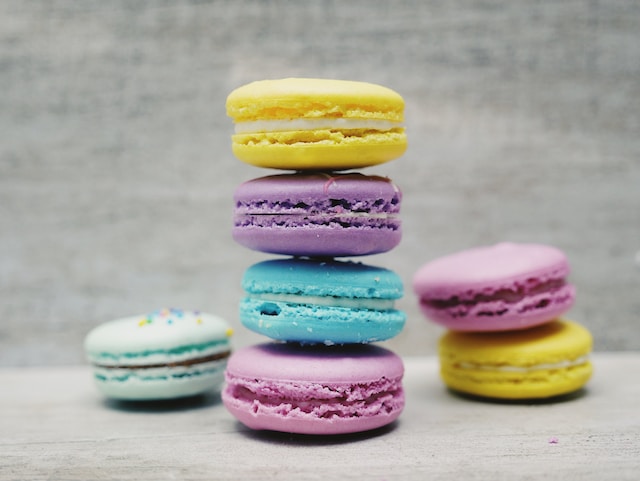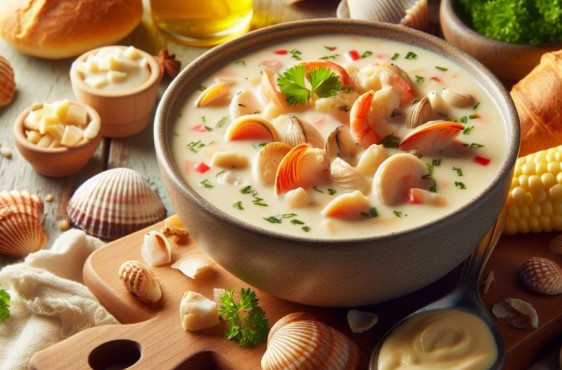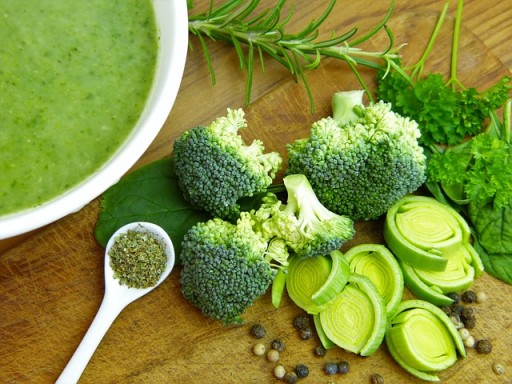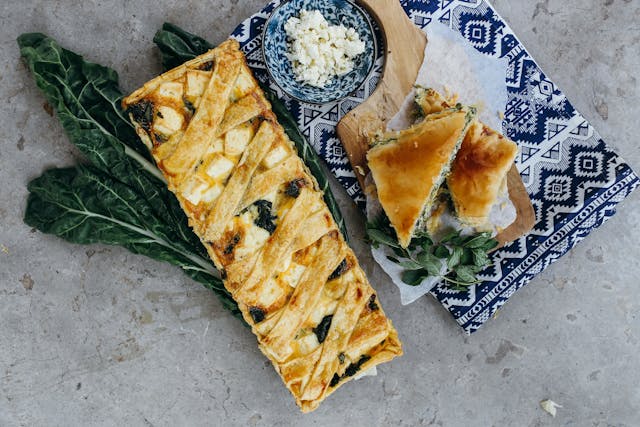Oil Based Food Coloring | See Our Guidelines On How To Use It

Oil based food coloring helps you to brighten up homemade sweets. It is one of the easiest ways to utilize. Moreover, food coloring comes in various forms, including water-based, powder-based, gel-based, and oil-based.
Oil-based food coloring is recommended for recipes where water will have a significant impact on the final product. Chocolate, candy melts, and fat-based items are examples. However, continue reading to learn how to produce oil based food coloring from home.
Make Oil-Based Food Coloring At Home: The Easiest Way
1. Gather The Ingredients
The first step in making oil-based food coloring is to acquire the components. They are listed below:
- 1 cup oil (corn, vegetable oil, canola, or almond oil are all good choices)
- A dish that can be microwaved
- Food coloring derived from oil
- A single-use spoon
2. Heat The Oil
To begin, fill a microwaveable bowl halfway with oil. Heat the oil for at least 30 seconds on medium heat to allow the food coloring to combine well with the oil.
It’s crucial to remember to use a colorless oil as your basis so that food dyes can stay true to color.
3. Add The Oil-Based Food Coloring
After 30 seconds, remove the bowl from the microwave and stir in the oil based food coloring. On the other hand, we recommend beginning with one drop of food coloring and increasing more as needed.
Because water or gel-based food coloring will separate and produce beads in the oil, we will emphasize the necessity of utilizing oil-based food coloring.
4. Mix Well Until Combined
Stir the mixture for about five minutes, or until completely blended. This time you use a disposable spoon. Therefore, it should be easy to agree with the hot oil if you use an appropriate oil-based food coloring.
If the correct color is not reached, add a few more drops and mix as needed. It is also vital to avoid using too many colors. This results in bitter-tasting oil-based food coloring that stains the inside of your mouth (which you don’t want).

What Is Oil Based Food Coloring?
Oil-based food coloring is a form of food coloring that is made using oil rather than water or gel. Glycerol, colors, and lecithin are common ingredients. Indeed, this sort of food coloring is more stable than water-based food coloring and does not quickly fade or change color.
Finally, because it contains oil, it is far more challenging to clean than water-based food coloring.
Tips & Tricks To Make Oil-Based Food Coloring
- It is ideal to use an oil with a neutral flavor, such as vegetable, maize, or canola oil. We recommend applying an oil with a natural aroma that you enjoy.
- Use a small amount of food coloring at a time. Because oil based food coloring is more stable than water-based food coloring, adding too much might cause the colors to become overly bright, making correction difficult.
- To begin, combine food coloring with slightly butter, margarine, or vegetable oil. This will help the color spread more evenly across the mixture.
- Unused food coloring should be kept in an airtight container. Thus, this prevents the color from fading or altering over time.
- Use soap and warm water to clean up any spillage.
Where To Use It
Oil-based food coloring is frequently used in baking to enhance the color of cakes, cookies, and other baked products. Moreover, it is also utilized in other products like confectionery and ice cream.
Simply said, oil based food coloring works best in situations where adding water would dilute the mixture significantly.
For example, never use water-based food coloring in chocolate since the water will “set” and damage the chocolate.
Colored chocolates sold in stores are often prepared with oil-based food colors, which provide a smooth and uniform color throughout the chocolate.
Candy coatings and melts are similarly water-sensitive. So, add oil-based food coloring to bring them to life.
Oil-based food coloring is used in fried foods. For example, in french fries, corn fritters, and mozzarella sticks.
Why To Use?
- Because off-colored meals are often regarded as inferior, dyes are added.
- Food colors can also help to protect vitamins and flavors that may be harmed by sunlight while being stored.
- We can use dyes to improve the natural color of food and to add beautiful colors to other dishes.
- Food color can influence flavor perception.

Beneficial & Non-Beneficial Aspects Of Oil Based Food Colors
Key Benefits
There are several advantages to using oil-based food coloring in baking. Enjoy flawless blending for a uniform appearance and rich, powerful color that withstands high heat for long-lasting effects.
1. Odd Incorporation: Oil-based food colors blend seamlessly with oil-based components, providing easy integration and equal color distribution throughout the batter, icing, or fondant. Thus, this creates a consistent and uniform look, which improves the overall attractiveness of your baked items.
2. Vibrant & Enthusiastic Colors: Because oil-based food colors have high pigmentation, you may obtain colorful and intense tints that quickly catch the eye. These culinary colors range from pastel to bold and stunning and may be used to match any creative concept or theme.
3. Always Keep The Color: Oil-based food colors keep their color integrity even when heated to high temperatures during the baking procedure. Thus, this guarantees that your colors stay bright and brilliant for as long as possible, with no fading or discoloration, resulting in a visually pleasing finish that lasts.
4. Diversity In composition: Oil-based food colors provide variety in combining, whether you’re tinting buttercream frosting, drawing color into fondant or gum paste, or coloring chocolate or oil-based recipes. Emphatically, you have total control over the final look of your baked products since you can simply get the right shade or color intensity.
5. Long-term effects: Food colors that are oil-soluble keep their brilliance and do not fade over time. Thus, this guarantees that your baked products keep their aesthetically beautiful color even after being exhibited for several hours or days.
Non-Beneficial Sides
1. Effects Of Auramine: Auramine is an oil based food coloring. Colour includes auramine, which inhibits growth and causes kidney and liver damage. Moreover, it is used to color beverages because of its vivid yellow color.
2. Harmful For Health: Metallic yellow used in Indian sweets such as jalebi and ladoo, is particularly harmful since it causes stomach, kidney, and liver lining deterioration. It also hurts the ovaries and testicles. It is often used to give color to laddus and biryani, and its usage causes dizziness, weakness, and food poisoning.
3. Rhodamine: A key element in the delicious and vibrant red drink, it degrades red blood cells and hurts the immune system. Undeniably, it causes growth retardation and liver and kidney damage.
4. Sudan Stains: Sudan stains are widely used because their brilliantly red color is appealing, and they are used to color chili powder or curry powder. It is not only extremely toxic to the liver but it has also been linked to kidney damage and is a probable carcinogen.
5. Can Cause High Blood Pressure: Lead chromate is a brilliant yellow dye that is also known as chrome yellow. To give it a vivid color, it is generally mixed with yellow powder.
Oil based food coloring is extremely hazardous since it causes anemia, stomach discomfort, neurological difficulties, high blood pressure, and fetal distress, all of which are symptoms of lead poisoning.
Food Color Chart & Formula
| FD&C Designation | Name | Color | Molecular Formula |
| Blue No. 1 | Brilliant Blue FCF | Blue | C37H34N2Na2O9S3 |
| Blue No. 2 | Indigotine | Indigo | C16H8N2Na2O8S2 |
| Green No. 3 | Fast Green FCF | Turquoise | C37H34N2Na2O10S3 |
| Red No. 3 | Erythrosine | Pink | C20H6I4Na2O5 |
| Red No. 40 | Allura Red AC | Red | C18H14N2Na2O8S2 |
| Yellow No. 5 | Tartrazine | Yellow | C16H9N4Na3O9S2 |
| Yellow No. 6 | Sunset Yellow FCF | Orange | C16H10N2Na2O7S2 |
Final Thoughts
It is simple to make oil based food coloring at home. Thus, this allows you a lot of leeway in selecting the colors you want and how vivid you want them to be. Concurrently, the type of oil you choose is essential to the success of your oil-based food coloring.
Choose a colorless oil, such as maize, canola, or vegetable, so it does not clash with the oil-based food coloring you’ll be utilizing as a coloring agent. Add a few drops of food color to the oil and thoroughly mix it in.
To achieve the required color, add a bit more food coloring. Finally, keep unused oil based food coloring in an airtight container in a cold, dry location.
Frequently Asked Questions
1. What is Oil Based Food Coloring?
Oil-based food coloring is a form of food coloring that is made using oil rather than water or gel. Glycerol, colors, and lecithin are common ingredients. Indeed, this sort of food coloring is more stable than water-based food coloring and does not quickly fade or change color.
2. Where to use this oil based food color?
Oil based food coloring is frequently used in baking to enhance the color of cakes, cookies, and other baked products. Moreover, it is also utilized in other products like confectionery and ice cream.
3. Why use oil-based food coloring?
Because off-colored meals are often regarded as inferior, dyes are added. Food colors can also help to protect vitamins and flavors that may be harmed by sunlight while being stored.
Moreover, food color can influence flavor perception.
4. What is the key benefit of using these food colors?
Oil-based food colors blend seamlessly with oil-based components, providing easy integration and equal color distribution throughout the batter, icing, or fondant. Thus, this creates a consistent and uniform look, which improves the overall attractiveness of your baked items.
5. Does using oil-based food coloring have any harmful effects?
Yes, using these oil based food colors is harmful since it causes stomach, kidney, and liver lining deterioration. It also hurts the ovaries and testicles. It is often used to give color to laddus and biryani, and its usage causes dizziness, weakness, and food poisoning.
6. Which food coloring is natural?
Natural Food Colors Some of the best food fiber dyes are avocado pits and peels (red), carrot *tops* (yellow), onion skins (yellow and green), black beans (blue), tea, and coffee.”
7. How can oil-based food coloring be made?
In a small bowl, mix a small amount of gel food color with a few drops of liquid oil. Start with a ratio of 1 part gel food color to 2 parts oil and adjust as needed to achieve the desired consistency. Stir the mixture until the gel food color is evenly distributed throughout the oil.
8. What chemicals are in oil based food coloring?
Food colors for use are chemically classified as azo, xanthan, triphenylmethane, and indigo dyes. Although certified color additives are called coal-tar colors because of their traditional origin, today they are mainly synthesized from petroleum-derived raw materials.
9. Is food Coloring oil soluble?
Coloring agents are widely used in food products. Many coloring agents are oil-soluble, while others are water-soluble. For example, bixin is soluble in oil whereas caramel color and anthocyanins are only soluble in water.
10. Does oil based food coloring stain?
Water-based food coloring is less likely to stain, as the water will wash away the dye before it has a chance to penetrate. However, oil-based food coloring can be more difficult to remove, as the oil will help the dye.



